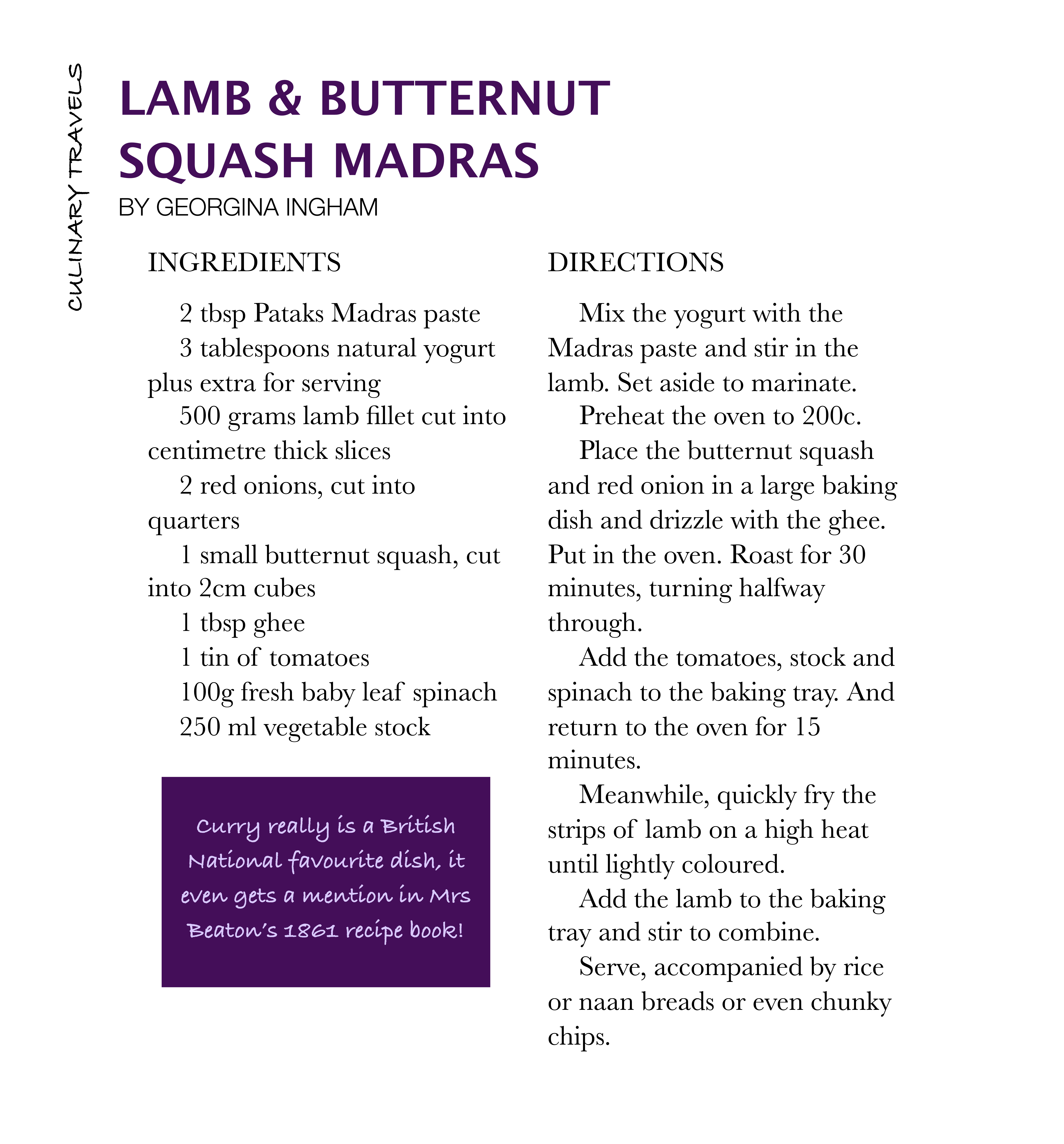Blog
Lamb & Butternut Squash Madras
Sponsored Post in collaboration with Pataks.
I was sent some Patak’s Madras curry paste last week to review. I adore a good curry, but am rather cautious of jarred products, preferring to make my own curry pastes etc and start from scratch. Sure, getting the pestle and mortar out and bashing all the ingredients up to make a fragrant concoction is all part of the fun. Right?
Sometimes though, if time or energy is in short supply, a top notch spice blend or jar of paste can be a lifesaver.
As Madhur Jaffrey points out, in the UK, Madras has come to mean a very hot curry and not much more, but there is an awful lot more than heat to a good madras.
“Curry” comes from the Tamil word kari, and is a generic reference to anything that accompanies rice or breads. It does not refer to any dish or combination of ingredients in particular.
Curry has been a part of the British palate since the 1700s. The first curry recipe in Britain appeared in The Art of Cookery made Plain and Easy by Hannah Glasse in 1747.
The Master Dictionary of Food and Cookery (p. 74) tells us:
“Curry was at one time an epicurean rite of English army circles in India, officers priding themselves on the special combination of spices they had invented.”
In 1861, Mrs. Beeton’s Book of Household Management listed 14 curry recipes, including Dr. Kitchener’s recipe for ‘India Curry Powder’. It contains coriander, turmeric, cinnamom, cayenne, mustard, ginger, allspice and fenugreek, although she notes that it’s more economical to purchase the powder at ‘any respectable shop’.
The cornerstone of most British curries seems to be Madras curry powder and the Madras is one of the most popular curries people try when eating out. Its origin, according to the History of Food (p. 498-99) must be credited to
“an Englishman named Sharwood (who) was dining with the Maharaja of Madras, who mentioned to him the shop kept by a famous master maker of curry powder called Vencatachellum. The Englishman visited it and obtained the secret of Madras curry powder, a mixture of saffron, tumeric, cumin, Kerala coriander and a selection of Orissa chillies…”
After studying the vegetable basket and refrigerator I decided to make a Lamb and Butternut Madras. I went for a really quick, oven baked recipe. This decision to do this was, I must, confess subconscious, well in part anyway. I had originally planned to pre roast the butternut squash to get a rich, sweet caramel-y taste but then I ended up adding some onions to roast too.
Then I thought why bother transferring it all to a pan? Why not just continue cooking it in the oven? And, so I did.
Along with the Madras paste I added some tinned tomatoes, spinach and a little vegetable stock. No other herbs or spices and it was so good. I really was expecting the curry to be lackluster and in need of ‘pepping’ up, but, alas I was wrong – a few jars of Patak’s may be finding their way into my store cupboard for quick and easy meals. Whilst I will never stop making my own curry pastes etc, Patak’s will be a great standby for weekday suppers.
I used a lovely fillet of lamb, which marinaded (sliced into strips) in a little yogurt and Madras paste before flash frying it to achieve a ‘tikka’ effect – this was then tossed through the hot curry before serving.
I served the curry with some fabulous Brown Cow Organics yogurt which I had sprinkled with a little garam masala for a cooling touch.
Add a few slivers of chilies before serving if you dare!
So simple, delicious and easy on the washing up!












What Our Followers Say
"Oh yum!!! I could eat one or two right now!"
Sami Tamimi
"Such a beautiful pic!"
Nigella Lawson
Our list of things to do in Cork has just expanded hugely thanks to Culinary Travels.
Triskel Art Centre Cork